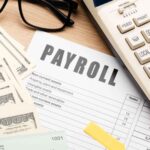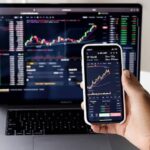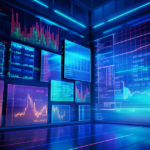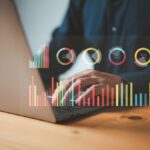Market volatility refers to the rate at which an asset’s price increases or decreases over a short period. Rapid and significant price fluctuations characterize high volatility, while low volatility indicates more stable and predictable price movements. Various factors, including economic data releases, geopolitical events, market sentiment changes, and structural market issues, can cause volatility.
Interplay between AI trading and market volatility
AI trading and market volatility are complex and multifaceted. Let’s explore some key aspects of this interplay:
Rapid response to market changes
AI trading systems excel at quickly analyzing and responding to market changes. During periods of high volatility, these systems can:
- Process news and market data in real-time
- Identify emerging trends faster than human traders
- Take advantage of fleeting opportunities
This rapid response capability can amplify market movements, especially if multiple AI systems react to the same signals simultaneously.
Pattern recognition and predictive analytics
AI trading systems recognize complex patterns in market data. This capability is particularly valuable during volatile periods.
- AI algorithms identify historical patterns that preceded previous market turbulence, potentially allowing early warning signals.
- Predictive analytics forecast potential market movements, allowing traders to position themselves accordingly.
Risk management
AI trading systems incorporate sophisticated risk management protocols. During periods of high volatility, these systems can:
- Automatically adjust position sizes based on market conditions
- Implement stop-loss orders to limit potential losses
- Diversify trading strategies to mitigate risk
These risk management features stabilize markets during turbulent times. However, if many systems de-risk simultaneously, it could amplify market movements.
Strategy crowding
As AI trading becomes more prevalent, there’s a risk of strategy crowding, where multiple AI systems employ similar trading strategies. During volatile periods, this can lead to:
- Amplified market movements as many systems react to the same signals
- Increased correlation between seemingly unrelated assets
- Potential for cascading effects if a common strategy fails
Market participants need to know this phenomenon and its potential impact on market dynamics.
Flash crashes and market anomalies
AI trading systems sometimes lead to unexpected market behaviours, especially during volatile periods. Flash crashes, where prices plummet and recover within minutes, are partially attributed to high-frequency trading algorithm interaction.
Implications for market participants
Given the complex relationship between AI trading and market volatility, what does this mean for various market participants?
For Individual Investors
- Be aware of increased short-term volatility, especially around significant news events.
- Understand that traditional technical analysis patterns may be less reliable due to AI-driven market dynamics.
- Consider implementing robust risk management strategies to protect against sudden market movements.
- Stay informed about market structure and immediate 1a pro air trading roles in your invested assets.
For professional traders
- Recognize the need to continuously evolve strategies to compete with or complement AI trading systems.
- Invest in technology and data analysis capabilities to keep pace with market innovations.
- Develop a deep understanding of how AI trading impacts market microstructure in your trading domains.
- Be prepared for rapid market moves and have contingency plans in place.
For regulators,
- Continue to monitor AI trading’s impact on market stability and fairness.
- Develop frameworks for oversight of AI trading systems, including transparency and accountability measures.
- Ensure market circuit breakers and other safeguards are appropriate for an AI-driven trading environment.
- Foster collaboration between industry participants to address potential systemic risks.
With an understanding of AI trading systems, market participants can better navigate volatile periods and make more informed decisions.


 Looking for Ways to Optimize Payroll Management in Malaysia?
Looking for Ways to Optimize Payroll Management in Malaysia?  Hong Kong MPF Wise Retirement Planning
Hong Kong MPF Wise Retirement Planning  Why do meme tokens gain traction among crypto participants?
Why do meme tokens gain traction among crypto participants?  Understanding Performance Bonds
Understanding Performance Bonds  Explore Riise trading app by Motilal Oswal: Your gateway to a seamless trading experience
Explore Riise trading app by Motilal Oswal: Your gateway to a seamless trading experience  Indian Investors: What Happens to Your US Stocks After You Die?
Indian Investors: What Happens to Your US Stocks After You Die?  What are the business applications of blockchain beyond digital currency?
What are the business applications of blockchain beyond digital currency?  Clinical Trial Outsourcing Trends: A Waud Capital Partner’s Perspective on Market Opportunity
Clinical Trial Outsourcing Trends: A Waud Capital Partner’s Perspective on Market Opportunity 